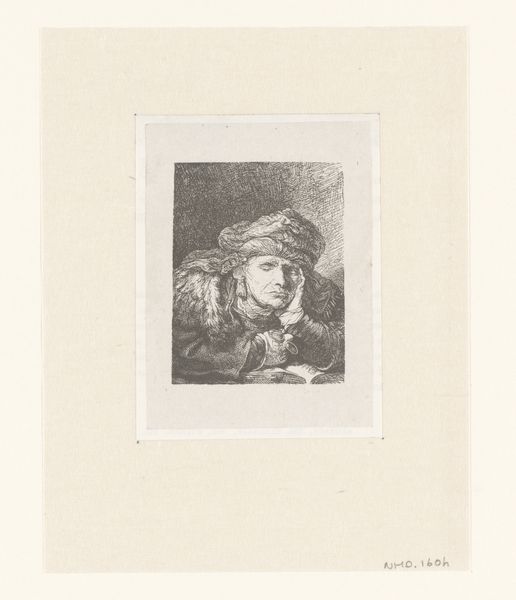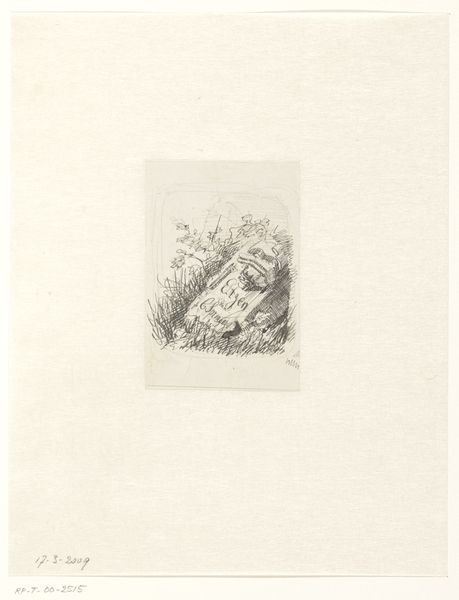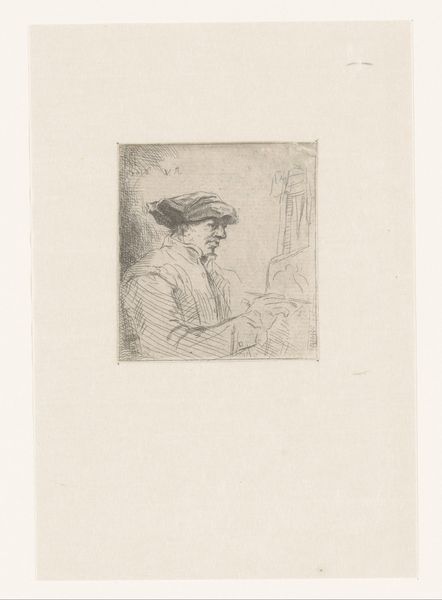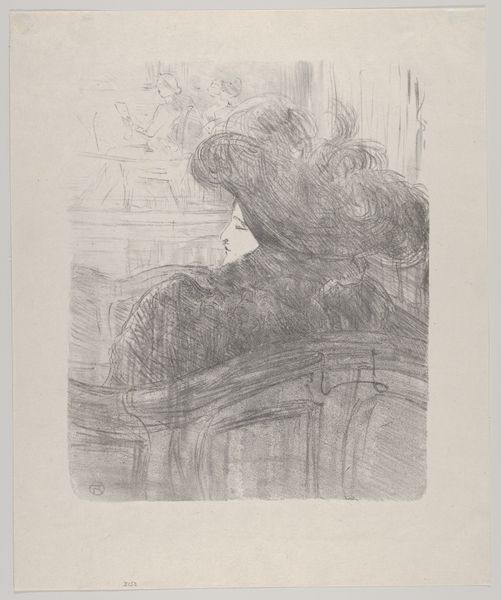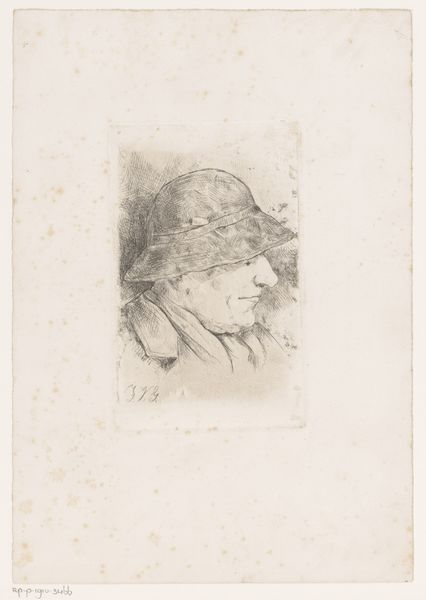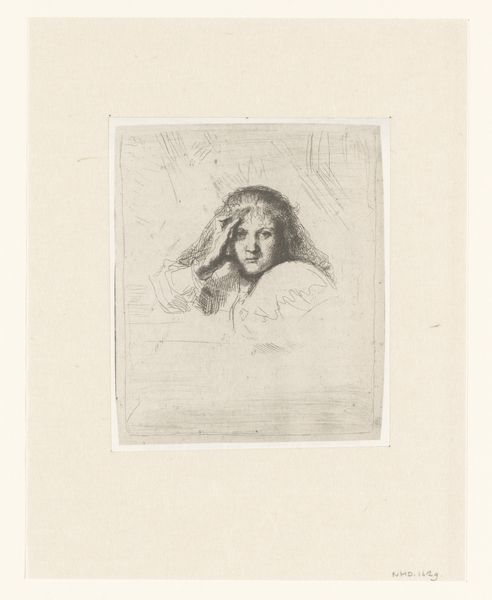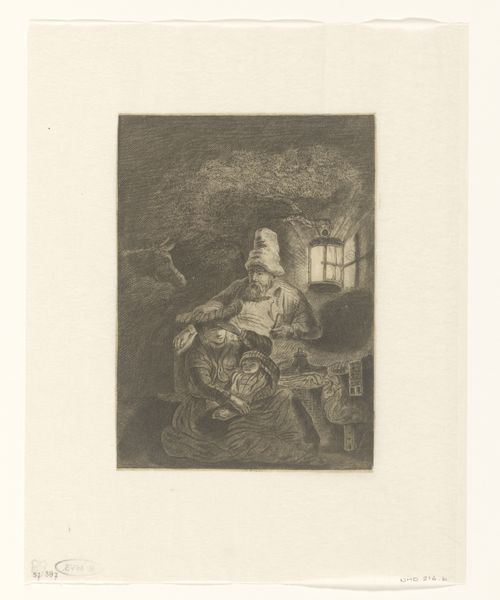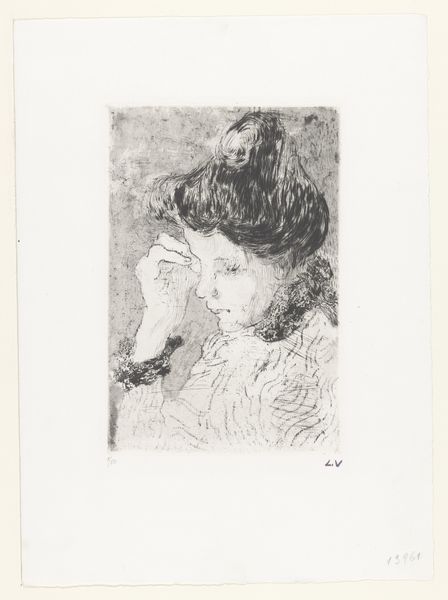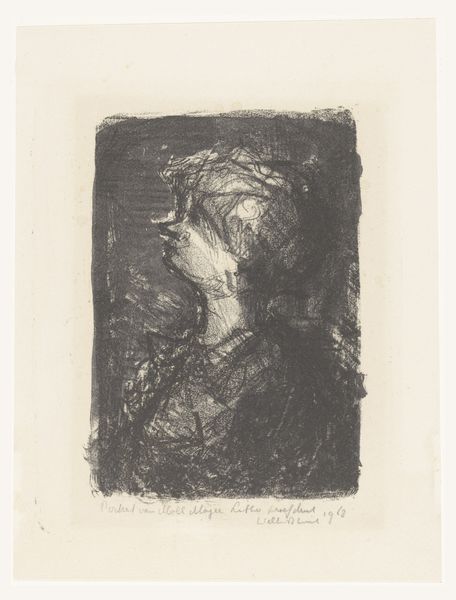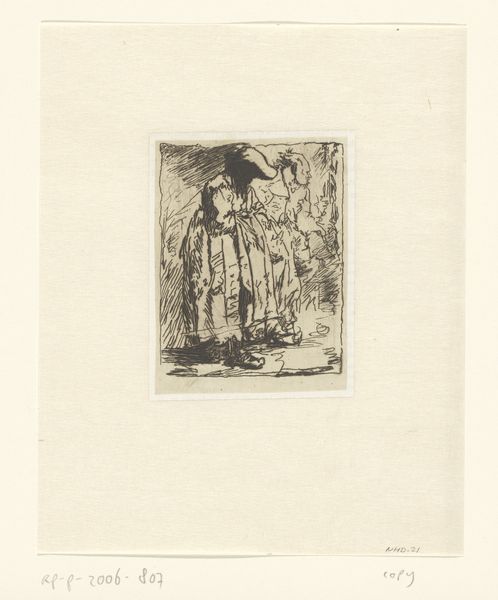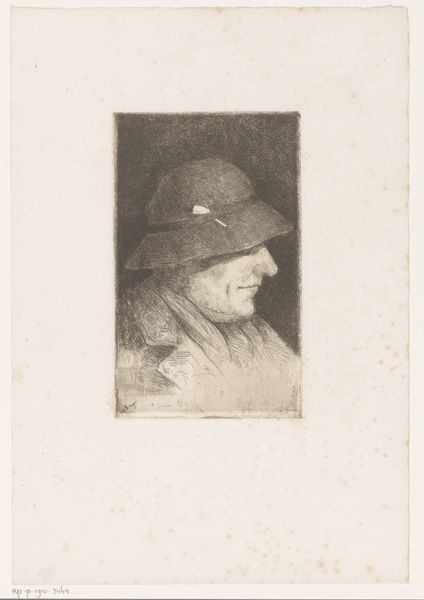
Dimensions: height 69 mm, width 52 mm
Copyright: Rijks Museum: Open Domain
Curator: What do you think of this etching, "Old Woman Sleeping," thought to be produced sometime between 1760 and 1781? The artist who created it, James Bretherton, utilized a blend of pencil and engraving techniques. Editor: Immediately, the image whispers a narrative of resilience, I suppose. Her eyes are closed, the pose heavy—she seems lost in slumber, yet draped in furs suggesting, perhaps, a hidden struggle against elements unseen or a stark commentary of age against society. It invites a lot of consideration on lived experiences doesn't it? Curator: Oh, totally. It almost feels like walking into someone's dream...a fragile, hushed space of memories and weariness. The soft pencil work, I think, makes the moment feel almost unbearably tender, don't you feel? Editor: In observing Bretherton's rendering of her layered attire, I am prompted to think about status, not simply from economic lens, but regarding aging women and representation. Does the work perhaps allude to class structures wherein older women are only relevant because they retain the finery from their youth? And further still—was Bretherton pointing out these hypocrisies through a genre piece? Curator: See, this is where it gets deliciously complicated for me. I see how one could approach it that way...Yet, when I look into the texture, I have to question those hard edges. Maybe Bretherton saw past all of that. This wasn't, after all, like so many grand oil paintings that sought to elevate, right? This feels a bit more humane... Editor: Yes, though if we consider it from a feminist art history angle, one has to wonder how the artist frames women of age, as subjects or societal symbols? How are their private, vulnerable moments represented, interpreted, and, really, by whom? Curator: Such good points. You've turned something initially quite simple into a well of fascinating inquiry. It almost makes you feel guilty interrupting such a quiet, deep sleep, you know? Editor: Well, and hopefully we give others some pause as they consider our histories with empathy—now and going forward.
Comments
No comments
Be the first to comment and join the conversation on the ultimate creative platform.
